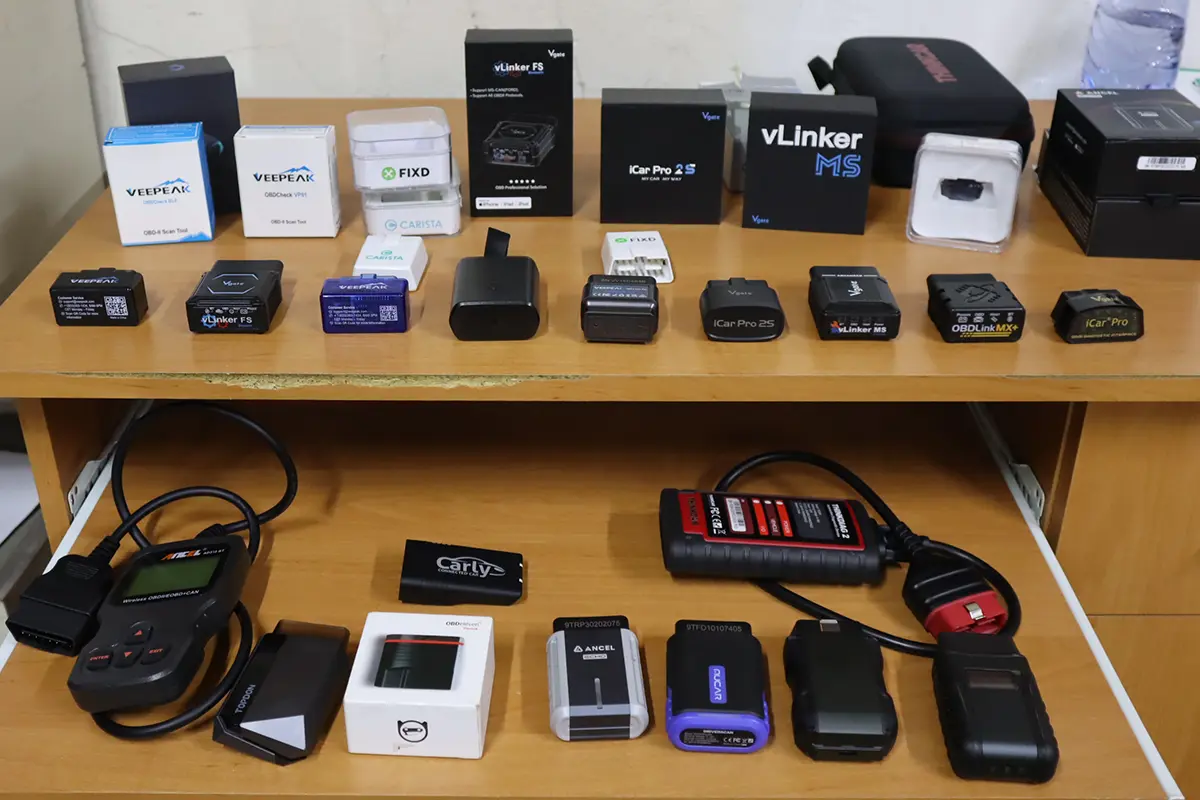P0325 Knock Sensor 1 Circuit Malfunction (Bank 1) means a fault with your knock sensor on the cylinder head 1. Check the quick overview for advice and then I will explain the code in more depth, including my case study from 10+ different P0325 cases.
P0325 quick overview
| Meaning | Knock Sensor 1 Circuit Malfunction (Bank 1) |
| Is it serious? | Not really, but fixing all faults right away prevents further damages |
| What is Bank 1? | Engine head #1, read Bank1 vs Bank2 for full explanation |
| Possible causes | – Faulty knock sensor – Triggered by other issues – Battery ground – Knock sensor wiring |
| How to fix | – Inspect knock sensor and wiring – Test knock sensor and wiring with a multimeter – Solve other codes if you have them (they may trigger P0325) – Check battery ground – Check fuel trims (if out of spec, knock sensor is most likely OK) – If you didn’t find anything, try replacing knock sensor |
| What is knock sensor? | A knock sensor is a small device that can detect knocking from irregular vibrations and sounds from the engine. The knock sensor will then turn these vibrations into an electronic signal which is sent to the engine control unit (ECU/ECM). |
The knock sensor is bolted onto the engine´s block or head. Looking up the knock sensor on the car parts website will help you understand what you are looking for assuming they have an image of the sensor.

Car Diagnostics Training
- Car Electrical basics
- OBD-II scanner basics
- How to use an OBD reader
- Introduction to a Bi-directional Scan tool
- OBD scanner buyer’s guide + discounts
How to fix P0325 – learn from mechanics
I looked into P0325 service cases at iatn.com website where in the private forums the mechanics seek advice from other mechanics. I looked up a bunch of cases to help you decide how to fix your knock sensor issue. They also always report the fix that worked for the vehicle so this section will be like having a real mechanic helping you solve your issue.
Case #1: Toyota
Vehicle Information:
1999 Toyota Avalon XL 3.0L
Issue:
Recurring codes P0325 and P0330 for knock sensors. After replacing both knock sensors and the wiring harness, the P0325 code continued to reappear. Additionally, the ABS and Traction Control lights were on.
Mechanics Suggested:
- Check if OE sensors were used and inspect the ECM connector for any corrosion on the circuit’s pins.
- Consider whether a misfire or vibration from a pulley might be causing the code.
- Investigate if the P0325 and P0330 DTCs are setting off the ABS and Traction Control lights.
- Use an oscilloscope to compare signals from each sensor to check for an ECU problem.
Final Fix:
Cleaning a loose ground at the battery terminal resolved the issue.
Case #2: Nissan
Vehicle Information:
2000 Nissan Maxima SE 3.0L
Issue:
MIL illuminated with codes P0325 (knock sensor), P0138, and P0139 (related to a bad downstream O2 sensor in bank #1).
Mechanics Suggested:
- Focus on addressing the O2 sensor codes (P0138 and P0139) first before worrying about the knock sensor (P0325).
- The P0325 code is common in Nissans and often does not illuminate the MIL.
- Check for possible damage to the O2 sensor circuit, especially after replacing the catalytic converter.
Final Fix:
Replacing the downstream O2 sensor on bank 1 resolved the issue.
Case #3: Chevrolet
Vehicle Information:
2000 Chevrolet S10 2.2L
Issue:
MIL on with code P0325. The knock sensor was replaced with an OEM part, but the code persisted.
Mechanics Suggested:
- Verify the knock sensor’s specification (90 to 110 ohms).
- Check the connectors for potential trouble.
- Consider external factors like safety chains or mufflers triggering the computer to interpret it as a knock.
Final Fix:
Replacing the knock sensor again with a GM part number 1045209 resolved the issue, and the MIL did not return after driving the truck a few times.
Case #4: Jeep
Vehicle Information:
2014 Jeep Wrangler Sahara 3.6L
Issue:
MIL on with code P0325 (knock sensor circuit). Despite replacing both knock sensors and the sub-harness, the code persisted.
Mechanics Suggested:
- Use a small hammer near the knock sensor to induce vibrations and observe the signal response.
- Ensure proper torque when installing sensors.
- Consider software updates for the PCM.
- Probe the harness to ensure a 5V DC reference voltage.
Final Fix:
Reprogramming the PCM to the latest revision level resolved the issue. Swapping the knock sensors at the PCM connector confirmed the PCM’s functionality. A temporary overlay harness was used to bypass potential wiring issues, resulting in consistent knock sensor voltages and no further codes.

OBD-II scanner Buyer’s Guide
- Scanner features explained
- Different types of scanners
- Scanners for coding/odometer/ECU/checks
- Best picks + discount codes
I test OBD-II scanners and make DIY Engine diagnostics guides to help you solve your car problems without having to depend on the mechanic. A lot of them will try to scam you or are just no help at all. About Juraj Lukacko